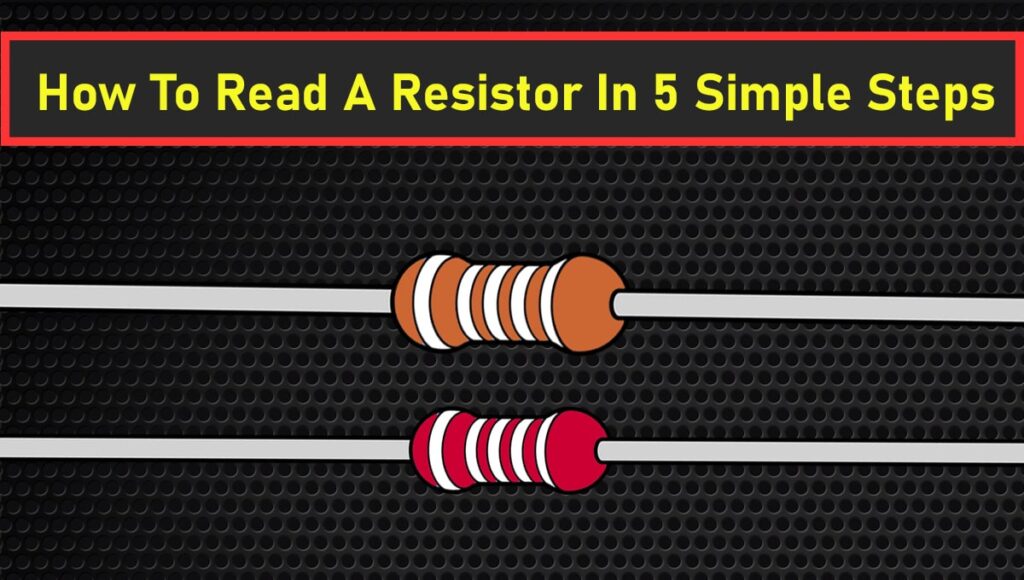Color-coded resistors have a value associated with the colors and arrangement on the resistor. There are 3 different styles of color-coded resistors, 4-band, 5-band, and 6-band. They all use the same chart but depending on the band type you will use more or fewer values from the chart. You can use a chart here to find the value of a resistor.
1. Determine where the first band starts. You can do this seeing if there is no major gap between it and the band closest to it. A band that has a large gap until the next band would be the tolerance band and should be read last. Below is an image indicating what the first band would be.
2. Determine how many bands you have and if you have a tolerance band. This will indicate if you have a 4-band resistor or a 5-band resistor
3. Use the color of the first band to find the first value under the first digit column, then do the same with the next band. Look up the 2nd band color under the 2nd digit column etc.
4. Your next band would be your multiple factors. If you had a 4-Band resistor this color will determine the value you will multiply against the first two digits you found.
5. Once you multiply these numbers you are left with your resistor value. But you might have one more band left, this would be your tolerance value. There are three tolerances, Gold, Silver, and None. If you don’t see a band then there is a tolerance value of ±20% unless there is a band present, refer to the chart for the value. Now you have your total resistance value and tolerance.
4-Band Resistor Example
In this example we will use a 4-band resistor.
- In the picture above we can see our first band is red, when we look it up on the chart we have a value of 2. This will be our first digit.
- Our next band is black, when we look up the value it is 0, so we have determined our first digit is 2 and our second digit is 0. Therefore our value so far is 20.
- Our next band will be the multiple factors. The third band on a 4-band resistor will be your multiple factors. We see it is brown and when we look this up the value is x10¹. When we multiply 20 by 10¹ we get 200. So now our resistor value so far is 200 ohms.
- Our next band is our tolerance band, we have a gold color and when we look it up we determine it is ±5%
- Our final value is 200 ohms ± 5%. You can see in the image below how we used the bands to determine this value
5-Band Resistor Example
In this example we will use a 5-band resistor.
- In the picture above we can see our first band is orange so we have a first digit value of 3
- Our next band is black so we have a second digit value of 0
- Our next band is green so we have a third digit value of 5
- The next band is orange so we have multiple factors of x10³
- Now we can determine our resistor value so far is 305 x10³ which is 305,000 Ohms
- Our tolerance band is silver which makes our resistor total value 305k Ohms ±10%
To determine the value of a 6-Band Resistor it has a similar process to the 5 band resistor but the last band is your temperature Coefficient value.
Now that you know how to determine the value of a resistor you can use this chart and find the value of many more resistors!
